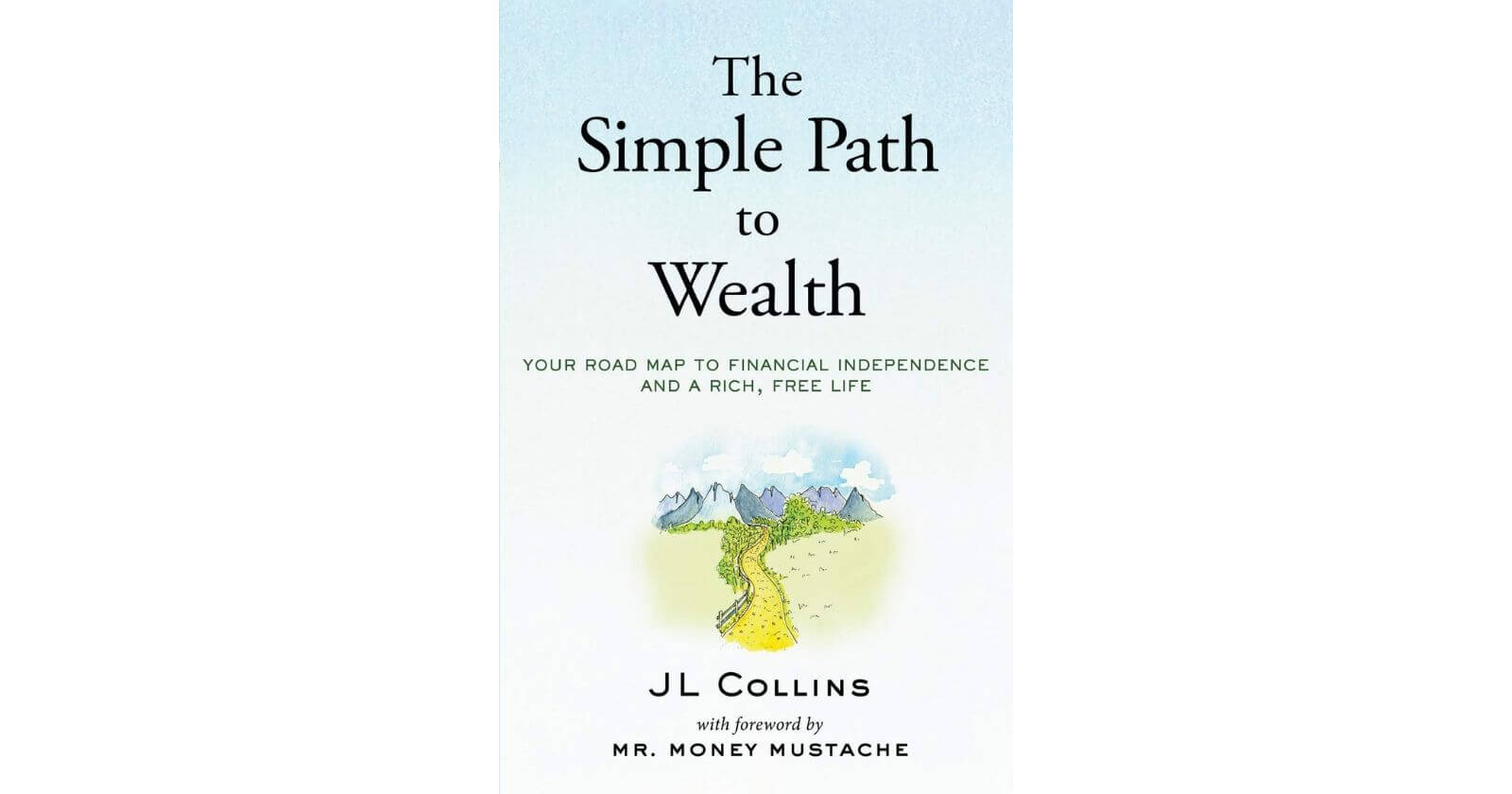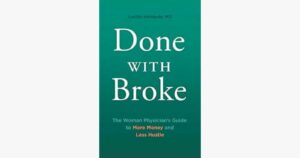In the previous post, we covered about half of the gem that is The Simple Path To Wealth by JL Collins.
Here, we continue from where we left off.
Asset Allocation
“Wealth Accumulation Phase”
The author is a proponent of simplicity.
He recommends sticking to the Total Stock Market Index Fund, preferably at Vanguard (VTSAX), for the entirety of your “Wealth Accumulation Phase”- that is, your working, saving and investing years. The implications of this are:
- 100% stock allocation. The book recommends adding in bonds much later in life, close to retirement.
- This aggressive allocation guarantees a bumpy ride. You should totally expect to have some pretty wild swings.
- Do not panic at those times- consider them a sale and buy some more.
- The less you tinker with your investment, the better it will do. (Ed: In fact, Fidelity did a study where they found that the investments of the deceased did best- since they couldn’t mess with their accounts!)
Though Collins recommends the 100% VTSAX portfolio, he acknowledges that a small fraction of bonds, 10-25% of the portfolio- actually has a slightly improved performance over time, in addition to the decrease in volatility. And hence, it is a perfectly reasonable alternative to the 100% stock allocation.
“Wealth Preservation Phase”
As one is nearing retirement, smoothening out the ride becomes more vital. The time horizon is shorter, no new money is being added and big dips in portfolio value affect the retiree’s income derived from it.
At this stage, adding in some fixed income- both via bonds and liquid cash, is usual. The author shares his own portfolio: 75% Stocks, 20% Bonds and 5% cash. (Ed: Note that the Trinity Study found a 75% equity allocation to be very safe with regard to portfolio longevity and usually ended up with many multiples of the initial portfolio value at the end of retirement).
The exact asset allocation can be tweaked based on individual risk tolerance as well as flexibility. If you need every penny of your 4% Safe Withdrawal Rate, you may have to be more cautious than if you have a more of a cushion.
Transitioning To Bonds
If you’ve been in 100% VTSAX through your “Wealth Accumulation phase”, you may slowly transition to bonds 5-10 years prior to your retirement date.
Or stay in VTSAX all the way up until you’re ready to retire. This might increase your accumulated wealth, at the expense of higher risk. If the market is down when you plan to retire, you may have to keep working till your investments make up some of their losses.
Rebalancing
Anytime you have greater than one asset class, you may choose to rebalance once in a while to maintain the asset allocation at the same percentages you initially allocated.
Vanguard studied the effect of rebalancing and found that any supposed benefit may just be statistical error. Hence, it remains optional.
- Rebalance annually, preferably avoiding the very beginning and end of the year (more than usual market activity and therefore price fluctuations).
- Rebalance anytime the market goes up or down more than 20%.
Rebalancing means selling the higher-performing asset and using those proceeds to buy more of the underperforming asset. This keeps your proposed asset allocation intact. In a regular brokerage account, selling an asset that’s doing well often implies paying capital gains tax- which might negate the benefit of rebalancing. Hence, it is best done in tax advantaged retirement accounts. (Ed: One way to avoid capital gains tax while rebalancing in a taxable account- and what I employ to rebalance- is adding new cash towards the underperforming asset- rather than selling anything).
Target Retirement Funds
One way to avoid having to rebalance is to use Target Retirement Funds (TRF). They automatically rebalance for you. Of course, you pay a bit more in Expense Ratios for this service.
Target Retirement Funds hold both stock and bond mutual funds in a set allocation that progressively becomes more conservative as retirement approaches.
If you desire a more aggressive allocation than the TRF gives you, choose a TRF for a later date than your own retirement date.
TRFs include bonds. And bond interests are subject to ordinary income tax rates. This is a bit of a problem holding them in taxable accounts. (Ed: With today’s low bond interest rates, this is less of a problem). However, plenty of 401(k)’s have TRF as options- where this problem does not exist.
How About International Stocks?
In recommending VTSAX, Collins often gets asked about international exposure. This is his take:
- The world has gotten very interconnected. The largest U.S. companies, which are part of VTSAX, have significant global exposure already.
- Also because the world has gotten smaller, the correlation between domestic and international equities is pretty high. Hence, the international exposure doesn’t really smoothen out volatility as much as one might expect.
- There is Currency Risk and questionable accounting practices in different places to consider
However, if you choose, you can have some international holdings. The options at Vanguard are:
- VFWAX: FTSE all-World ex-U.S. Index fund
- VTIAX: Total International Stock Index Fund
- VTWSX: Total World Stock Index Fund (includes U.S. Stocks)
What’s So Great About Vanguard?
- Jack Bogle created Vanguard and the first Index Fund, way back in 1975- before it was fashionable to do so.
- Vanguard is owned by its investors. So, it can operate its funds “at cost” without needing to generate profits for owners. This accounts for the lowest Expense Ratios for Vanguard funds across the industry.
- You can invest in the same fund either in the form of a Mutual fund or an Exchange-Traded Fund (ETF).
- If you do not have access to Vanguard in your Employer-sponsored Retirement Account, go with the Total Stock Market fund from whichever brokerage is available.
- Vanguard has many checks and balances in place to keep your money safe from theft or disaster. Also, your money is not really invested “in” Vanguard but in all the individual stocks and bonds. So, in the unlikely scenario that Vanguard bites the dust, your money will still be safe.
Investing in Retirement Accounts
When you have both tax-advantaged retirement accounts as well as ordinary taxable brokerage account, you need to focus on tax-efficient placement of assets. This implies preferably placing tax inefficient investments into Roth or pre-tax accounts.
But not at the cost of asset allocation. That still trumps all.
When you are closer to retirement, there are several strategies, including Roth Conversion Ladder, to minimize tax burden during the distribution phase (retirement).
Required Minimum Distributions (RMDs) are a consideration once you turn 72 years of age (used to be 70.5 yrs). If you have a large pre-tax retirement account, your RMDs will be high. This will push you into a higher tax bracket. Roth conversion of your pre-tax accounts in years prior will help to reduce them enough to let you stay in lower brackets when you need to take RMDs.
Funding Hierarchy
What order should you put money into your accounts? It depends on your earnings, and therefore your tax bracket:
Fund your 401(k)/ other Employer-sponsored Retirement Plan up to the match→ Roth IRA, if in low/no income tax bracket→ Deductible IRA at higher tax bracket → Max out 401(k) → Non-deductible IRA → Taxable Account. (Ed: though the author doesn’t mention it, I would add converting the Non-deductible IRA into a Backdoor Roth IRA).
HSA
The Problem With Financial Advisors
- Making investing complicated benefits the financial industry, not you and me.
- The finance industry attracts a disproportionate number of crooks.
- They are glib talkers and even the smartest folks fall prey to their schemes. (Ed: my story is here, if you want to read)
- The way the industry works often makes conflicts of interest get in the way of good advice for clients. For example, the worst investment products often have the best commissions for advisors.
- Even if they are not crooks, they are often not competent.
- Permanent life insurance products and annuities have some of the highest commissions in the industry- and the reason they are so aggressively sold.
- Since commissions got a bad rap, the industry switched to the Assets Under Management (AUM) model of compensation for advisors.
- This model, even if it appears innocuous, is a heavy drag on your portfolio: the 1-2% AUM charge can add up to hundreds of thousands of dollars over your investing lifetime.
- There is some conflict of interest here, too- debt payoff or investing in any account not managed by the advisor is often discouraged- since it does not pad their pockets.
- The last model is an hourly rate. This usually works out in the clients’ best interest.
The author pens a very provoking thought next: “As a novice investor, you have two choices: learn how to pick an advisor or how to pick investments”. Which do you think reaps higher dividends for you?
Why Dollar Cost Averaging Is Less Than Ideal
- With Dollar Cost Averaging (DCA), you have a stash of cash to invest. But instead of putting it to work in the market right away, you put in little bits over a period of time in regular intervals.
- It helps to ease the pain of the market dropping precipitously right after you’ve put in a chunk of money.
- However, the market goes up 77% of the time- hence, it is more likely that prices are going up while you spread the investment over time.
- DCA messes up your asset allocation- since you are heavily into cash in the beginning of the process.
- DCA doesn’t exclude the possibility that the market could still plunge right after you’ve gone all in.
When you have a lump sum to invest, it is ideal to put it all in at once.
Retirement Spending:The 4% Rule
- A common rule of thumb says you can spend about 4% of your initial retirement nest egg every year and increase it with inflation, too.
- Your money should last you about 96% of the time.
- Go down to 3% withdrawal and you can be 100% certain (statistically, and based on past data) of your retirement stash outlasting you.
- Forego the increases with inflation and you can go up to 6% a year.
- You need a portfolio with at least 50% stocks, up to 75%, if you can.
- This is not a set-it-and-forget-it scenario- you have to reassess periodically and go up or down, as needed.
- You are usually left with an impressive amount of money at the end of retirement- with the 4% withdrawals, indexed to inflation- 3x your starting amount with a 50/50 stock:bond portfolio. Or 6x with a 75/25 stock:bond ratio.
- These numbers hold true for portfolios containing low-cost index funds. Add in a 1-2% AUM fees to it and the probability of your money lasting you drops to 84% and 65%, respectively (as per Wade Pfau’s analysis).
The Logistics of Withdrawals
- By the time you retire, you will likely have a Roth IRA and a taxable account. You would have rolled over your 401(k) into a Traditional IRA.
- You can choose to first offload any individual stocks, especially if the capital gains tax hit can be minimized or eliminated.
- Continue to withdraw from the taxable account until it is time for RMDs from your tax-advantaged accounts.
- Keep doing Roth conversions from the IRAs to fill up the lower tax brackets until it is time for RMDs. This will reduce the amount of RMDs you need to take out and thereby lower your taxes.
- Once you reach 72 years and it is time for RMDs, you withdraw from the IRAs and let the taxable account ride.
- If you do not spend all the RMDs, reinvest it into your taxable account.
- Your Roth IRA is the last one you should plan to touch. It is the best one to pass on to heirs.
- Rebalance once a year and take stock of your portfolio and if any changes in spending is warranted.
Social Security
- Social Security was created in 1935, following the ravages of the Great Depression.
- In those times, life expectancy was about 65 years for men and 68 years for women.
- Starting payouts at age 65 therefore worked well for the system.
- Now, life expectancies are a lot higher, therefore the system is paying out more than it is bringing in.
- The Social Security funds are invested in U.S. Treasury Funds.
- You can opt to start your Social Security checks anywhere from age 62-70 years.
- The longer you wait, the more you get per month, but for fewer years, obviously.
- Unless you need the money, you could consider delaying SS until age 66.
- The breakeven point for starting at age 66 is 84 years. That is, you come out ahead by delaying to age 66 if you live past 84 years of age.
- When the higher earning spouse passes away, the other spouse can switch their lower payments for your higher SS checks.
- For those less than 5 years of age, we are not so sure of the fate of Social Security.
- A bunch of changes are likely coming to keep the system going.
- The author recommends you don’t factor in SS among your retirement funds. If you get it, count it as a nice surprise.
Money for Good: Charitable Giving
- Apart from personal freedom, money can help you give to your favorite causes.
- Charitable contributions are tax deductible, if you itemize your deductions.
- You can set up a Charitable Donation Fund at Vanguard. The donation is tax-deductible in the same tax year.
- Appreciated assets can be transferred to the Charitable Fund. You get a deduction for the entire amount donated and all capital gains tax is waived.
- Assets from tax-advantaged accounts can also be transferred, tax-free, into the Foundation.
- Investments grow tax-free within the account until you designate it to a particular charity.
Risk is Unavoidable
- Absolute certainty, without risk is not possible.
- There is always a chance that some catastrophe will befall the U.S. economy or the world at large- and there is not much we can do about that. Also, in such circumstances, your choice of investment is unlikely to matter.
With this, we come to the end of the book. I hope this summary gave you a glimpse into some of the pearls The Simple Path To Wealth contains.
If you read the book, your time will be well spent. To purchase, consider the affiliate link at the top of the post, at no extra cost to you. And thank you for supporting this site.
Questions or comments? Pen them down here! What is your biggest takeaway from this exceptional book?




